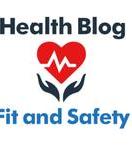Deadlifts are considered the most fundamental exercises at your workout place for many good reasons. Different movements target the complete posterior chain in deadlifts, including lower back muscles, hamstrings, and glutes. But some lifters reported that deadlift causes significant lower back pain; if you experience back pain after a deadlift, this article is fruitful. Here bodybuilding experts took time to break down major deadlift issues and fix them with the help of orthopedic aspects.
Five common causes of pain from deadlifts
Reason 1: Hip Structure
Fitness video creator McGill says that back pain develops when descending into the deadlift. When you get a very narrow foot stance, you will experience a mechanical collision between the upper hip socket and the leg bone, creating femoroacetabular impingement or FAI. Thus, if you cross your hip capacity, you will experience a pinching sensation at the hip joint, which signals you to stop doing deeper without bending at the lower back.
On the other hand, some people carry more shallow hip sockets, making them naturally flexible from the bottom to perform deadlift or squat efficiently. You have to widen the stance and then go much deeper into the lifter’s wedge during deadlift pull to avoid any negative consequences.
Reason 2: Exceed Your Range of Motion
When you exceed the range of motion, for example, the weight of a standard bar is 45 pounds on both sides, having 8.75 inches above the floor, and an assembling plan that was carried out to shield Olympic weightlifters from pulverizing their skulls assuming an upward lift turns out badly. While incalculable skulls might’ve been saved, that self-assertive stature it compels you to have a particular scope of movement, directed by your body structure, to have the option to securely deadlift straightforwardly off the floor. Also, assuming you’re utilizing more modest weight plates, the necessary scope of movement increments significantly further. To fix these undesirable consequences, raise your work setup. If you do that, you don’t have to force your body to pull from the ground; uplift the bar. You can use a power rack or block to lift the entire setup. This minute change in construction prevents you from any back injury.
If you feel an intense back pain problem after powerlifting, you must avoid it because you have to pull from the floor, which can be very risky.
Reason 3: The lifter’s wedge
It is the proven way to save your back throughout the deadlift and unleash the capacity of your hips. You have to do a rock backtest by determining the knee and foot width. Then go down into your short top position ( hands-on knee) to stabilize the alignment, descend out of that with hands outside your knees, then push your hands into the bar to strengthen the grip—next, start to lock your low back. Then bend force into the bar, activate your back, lift your chest a little, then lock it in. Then add a little squeeze. Then with your back locked, you can release the full power of the hips.
Reason 4: You must have the capacity to use more weight
While perfecting your deadlift technique and strengthening your backbone and core muscles, you must invest enough time. It is not a one-day job. It is a time-consuming process that requires practice. During this process, lift the weight, which is a little more than your ability to maintain a strong spine and perfect flexibility throughout the process.
If we follow the Russian way of thinking, you start by lifting a broomstick. Try not to allow the self-image to disrupt everything,” says McGill. “On the off chance that you can raise the broomstick with great structure, you currently are permitted to have an Olympic bar. Assuming you lift that with a great network, you’re presently allowed to place a little weight on one or the other side. Also, as long as you keep the excellent system, you procure the option to have more weight.
Reason 5: Increase your adaptability
If you feel pain but not so sharp, it signals that your lower back muscles are adapting to the challenging exercise. If you think your back is not flexible enough, it is heavily needed to stabilize your body as you lift. Taking into account that a large portion of the populace sits at a work area or slouched over for most of the day, being placed into a neutral spine position and lifting weight with great structure will turn these muscles on and work them more than ever,” says Ethier.
Experts suggest improving your grip strength before doing any deadlift and curl lift because in this bodybuilding exercise, your forearm experiences enough pressure. Grip strength is very essential for sportspersons, athletes. It is even important for common people as when you carry a heavy bag, you have to put a lot of pressure to your forearm.

